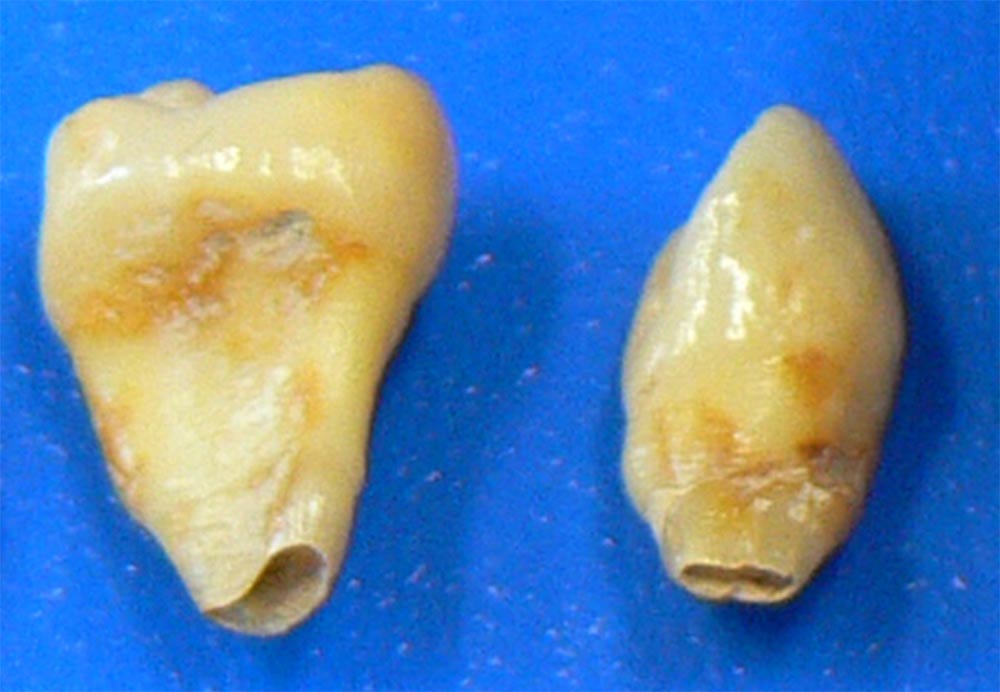Image Gallery: Ancient Corpse Reveals Medical Oddity
Ancient Oddity

Archaeologists working at the site of La Fogonussa near Lleida, in Spain, have uncovered a female skeleton that dates back around 1,600 years. Roof tiles known as tegulae were put over her in antiquity, creating a gabled roof. No other artifacts were found with her and researchers believe she had a low socio-economic status. She lived at a time when the Roman Empire was in decline.
Calcified Mass

A calcified mass that would turn out to be a tumor was discovered in the pelvis of the Roman woman's corpse.
Tiny Tumor

The tumor is spherical with a protuberance (part sticking out) and is about 1.7 inches (44 mm) in diameter at its most distant points.
Toothy Tale

Inside researchers discovered four deformed teeth and a piece of bone that had grown within it. Two of the teeth are still attached to the wall of the tumor itself. This is the first time an example of this type of tumor, known today as an ovarian teratoma, has been found from the ancient world.
Tumor Close-Up

A close-up view of the two teeth still attached to the tumor.
Deformed Teeth

All four of the teeth were deformed; these two were found within the tumor but were no longer attached.
Spanish Site

Lleida, the modern-day city nearby where the necropolis was discovered, is located in modern-day Catalonia in northeast Spain.
Sign up for the Live Science daily newsletter now
Get the world’s most fascinating discoveries delivered straight to your inbox.
Roman Empire

By A.D. 411 the Suevi, Alans and two groups of Vandals had moved into Spain, weakening Roman authority. The time period this woman lived in was one of major change for Spain and the broader Roman Empire.

Owen Jarus is a regular contributor to Live Science who writes about archaeology and humans' past. He has also written for The Independent (UK), The Canadian Press (CP) and The Associated Press (AP), among others. Owen has a bachelor of arts degree from the University of Toronto and a journalism degree from Ryerson University.









